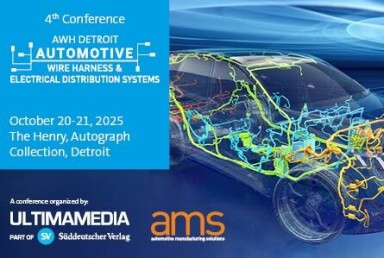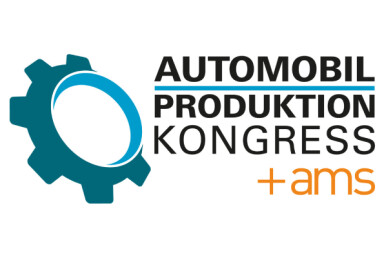Siemens’ OT networking blueprint: Transforming automotive manufacturing with digitalisation
In an era where digital transformation is reshaping automotive manufacturing, Siemens’ latest whitepaper on operational technology (OT) networking reference architecture provides a critical roadmap for manufacturers looking to enhance their (OT) networks. With a focus on automation, cybersecurity, and IT-OT integration, the document serves as a strategic guide for industry leaders aiming to build resilient, scalable, and secure manufacturing ecosystems.

Read the case study now
For automotive experts working in manufacturing operations, this whitepaper is a vital resource as it addresses the key challenges of Industry 4.0, including network reliability, cybersecurity risks, and future scalability. It also fits within Siemens’ broader body of published content on digitalisation and smart factories, reinforcing its position as a thought leader in next-generation manufacturing solutions.
The digital backbone of smart factories: Understanding OT networks
As automotive production becomes increasingly connected and automated, OT networks play a central role in ensuring seamless communication between machinery, sensors, robotics, and cloud-based systems. However, the evolution of legacy industrial networks has led to challenges, including security vulnerabilities, lack of standardisation, and inefficient network architectures.
Siemens’ whitepaper highlights two prevalent OT network structures that have developed over time:
- The evolved OT network – A patchwork of interconnected systems that have grown organically, often lacking redundancy, documentation, and modern security protocols.
- The IT-OT entangled flat network – A highly integrated but unsegmented network where IT and OT systems coexist, creating performance bottlenecks, cybersecurity risks, and troubleshooting difficulties.
By recognising these limitations, Siemens presents a structured OT networking blueprint designed to address the specific needs of automotive manufacturing while preparing for future digital innovations.
Key pillars of a future-ready OT network
The first of these is the need for manufacturing continuity. In the automotive industry, even brief production stoppages can lead to substantial financial losses. Siemens’ OT networking reference architecture emphasises redundant network designs, ensuring near-zero downtime.
By integrating fast failover mechanisms (like MRP ring redundancy) and self-healing network topologies, manufacturers can eliminate single points of failure and enhance overall network resilience.

Another key pillar is to ensure a robust and scalable infrastructure is in place. Manufacturing environments are inherently harsh, with extreme temperatures, dust, and vibration impacting network components. Siemens advocates for industrial-grade hardware, such as ruggedised switches, routers, and firewalls, as well as high-durability cabling and wireless networks with modular architectures for easy expansion as factories scale operations. These elements ensure long-term operational efficiency while reducing the need for frequent replacements or maintenance downtime.
With OT networks increasingly connected to IT systems and external cloud platforms, cybersecurity is no longer optional – it’s essential. Siemens underscores the importance of multi-layered security by incorporating firewalls between IT and OT networks, intrusion detection and prevention systems (IDS/IPS), secure remote access solutions to prevent unauthorised entry and ensuring compliance with IEC 62443 standards, ensuring end-to-end network security.
With the automotive industry undergoing rapid technological shifts, from electric vehicles (EVs) and autonomous driving to AI-powered production systems, OT networks must be flexible enough to integrate new automation processes and digital solutions without extensive rework.
Siemens’ approach to network modularity ensures that manufacturers can seamlessly adapt to new production models, add new vehicle derivatives, and incorporate emerging technologies like Edge computing and AI-driven analytics.
The role of IT-OT integration in smart factories
One of the most pressing challenges in modern manufacturing is the convergence of IT and OT. Traditionally, IT networks managed enterprise applications, cloud computing, and data analytics, while OT networks focused on real-time control of industrial machinery. However, as factories become data-driven and interconnected, these two domains must work seamlessly together.
Siemens proposes a structured IT-OT integration model, ensuring secure and efficient data flow between enterprise-level applications and factory floor systems. A centralised network management through SINEC NMS, enables real-time monitoring of network performance supporting automated diagnostics, predictive maintenance and reducing system failures before they impact production. This holistic approach allows automotive manufacturers to leverage real-time production insights, improve decision-making, and create a fully digitalised factory ecosystem.
A lifecycle approach to network optimisation
Building a future-ready OT network isn’t just about initial deployment it requires a continuous improvement strategy. Siemens highlights a four-phase lifecycle to maximise network performance over time:
- Network design – Ensuring scalability, security, and IT-OT integration from the outset.
- Implementation & commissioning – Deploying hardware, configuring network software, and ensuring compliance with industry standards.
- Operation & maintenance – Monitoring system performance, applying security updates, and conducting proactive maintenance.
- Continuous optimisation – Enhancing network efficiency, upgrading to next-gen technologies, and futureproofing for emerging trends.
By embracing this structured approach, manufacturers can minimise operational disruptions, reduce total cost of ownership, and stay ahead of industry advancements.
The future of OT networking in automotive manufacturing
With automotive manufacturing evolving at an unprecedented pace, network infrastructure must evolve alongside it. Siemens’ OT networking reference architecture provides a clear, actionable framework for manufacturers to:
- Strengthen cybersecurity in an increasingly connected ecosystem
- Improve factory efficiency with scalable, high-availability networks
- Support digital transformation through IT-OT convergence
For more insights on automotive digitalisation, explore Siemens’ full suite of smart manufacturing solutions at Siemens Automotive Smart Manufacturing.




